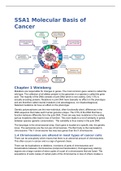Samenvatting
Population & Development Summary
- Vak
- Instelling
Summary of áll the lectures for the course Population and Development in the year 2022/2023. This includes personal notes and examples + figures from the PowerPoint presentations. In addition to this, the introduction and first chapter of the book 'Population and Development' by W. Gould is summar...
[Meer zien]





